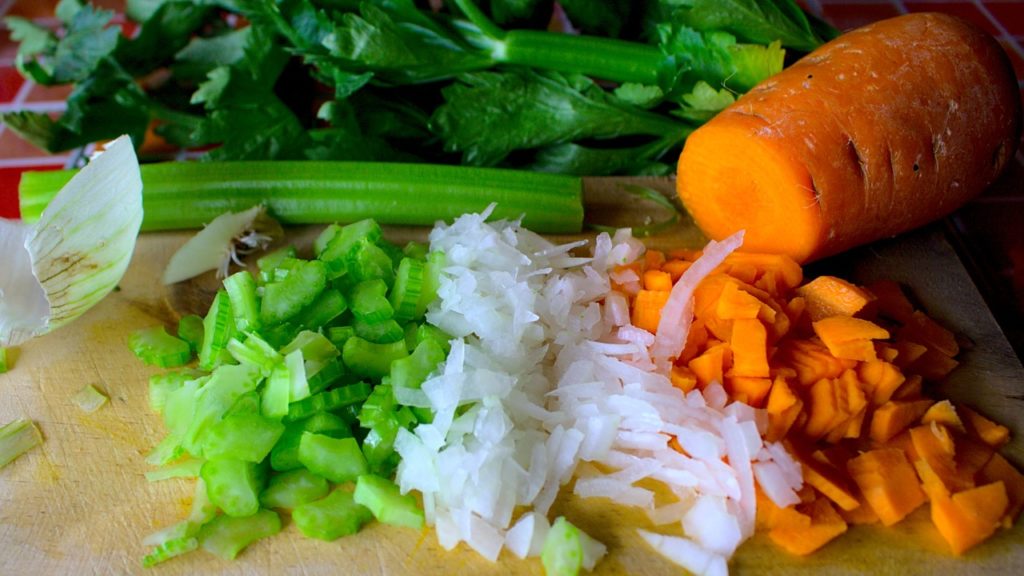
In this cookery course I am going to start right at the beginning. Before stocks, sauces and soups, we have to look at what ingredients give flavour to a particular dish.
Stocks, for example, can be based on meat, vegetables, fruit or a combination of all.
But what gives the best flavour, say, with a vegetable stock. What are the best vegetables to use?
If you look at any classical French stock, the main flavouring ingredients are carrots, onions and celery, or what we call a “Mirepoix”
The mirepoix is indeed a classical foundation flavouring for many dishes, for example, stews, braises, roasts and soups.
It is used in a lot of American dishes.
I also add leeks to the formula to give an additional depth to the flavour.
In Cajun cookery the mirepoix consists of green bell pepper, celery and onion, or what they term “The Holy Trinity”
In Chinese cookery, the holy trinity in stir fried dishes is spring onions, garlic and ginger, with the possible addition of chillies.
All ingredients must be chopped up to ensure maximum extraction of flavour. If you are preparing a stock, don’t peel or trim the items as they are going to be strained when the cast of characters have performed their role. This includes the peel from onions, for example, which add to the overall final colour of the stock.
So a vegetable stock is a liquid extraction which can be used as the basis for soups and sauces. It is ideal for vegetarian and vegan dishes.
When I prepare vegetable stocks I use additional ingredients to gain maximum flavour. Apart from carrots, onions, leeks and celery I add the following:
Bell pepper, mushrooms (especially the trimmings), bay leaves, black-peppercorns (slightly crushed), crushed garlic cloves (including skin), chopped potato (including skin), fresh tomato/tomato skins/tops and a selection of fresh herbs such as parsley stalks, thyme, rosemary and sage.
So the idea is to chop all the ingredients roughly (no peeling or discarding of any skin), add to a pan, cover with cold water and bring to the boil. Lower the heat to a simmer and let it tick over for about 2 hours for maximum extraction. If you have a pressure cooker, this can be reduced to 1 hour.
Before straining, leave to cool to about room temperature, this ensures all flavour has been extracted. Don’t add salt to the stock just yet as you might need to reduce it for addition to a recipe, which would increase the salinity or saltiness.
Don’t waste the leftover veggies, use to feed your pets or add your compost heap.






